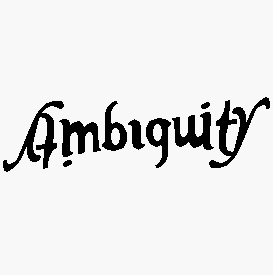Ambiguous Agreement
June 23, 2020 Hoover Panel Systems contracted with HAT Contract to design a component for office desks. The Fifth Circuit found their contract ambiguous, noting the tension between its introductory and first-numbered paragraphs. While both address confidentiality, the introduction is general and paragraph 1 describes a particular process:
Hoover Panel Systems contracted with HAT Contract to design a component for office desks. The Fifth Circuit found their contract ambiguous, noting the tension between its introductory and first-numbered paragraphs. While both address confidentiality, the introduction is general and paragraph 1 describes a particular process:
“Both parties agree that all information disclosed to the other party, such as inventions, improvements, know-how, patent applications, specifications, drawings, sample products or prototypes,[]engineering data, processes, flow diagrams, software source code, business plans, product plans, customer lists, investor lists, and any other proprietary information shall be considered confidential and shall be retained in confidence by the other party.
1. Both parties agree to keep in confidence and not use for its or others benefit all information disclosed by the other party, which the disclosing party indicates is confidential or proprietary or marked with words of similar import (hereinafter INFORMATION). Such INFORMATION shall include information disclosed orally, which is reduced to writing within five (5) days of such oral disclosure and is marked as being confidential or proprietary or marked with words of similar import.”
The Court noted “[s]everal plausible interpretations” of these paragraphs:
- Different materials. “Hoover reads the opening paragraph to apply to the prototype, the primary property the confidentiality agreement was entered into to protect. Hoover argues that the first numbered paragraph applied to other information and communications that were not obviously confidential under the opening paragraph.”
- General v. specific. “HAT reads the opening paragraph to speak generally about the content of the agreement, and the first numbered paragraph to provide the specific instructions needed to put the confidentiality agreement into effect.”
- Different procedures. “[Another possible] interpretation is that under the agreement, proprietary information is automatically confidential while all other information must be marked. The opening paragraph states that “proprietary material shall be considered confidential,” and in the first numbered paragraph, “all information . . . which the disclosing party indicates is confidential or proprietary or marked with words of similar import” is considered confidential.”
- Substance v. housekeeping. “Another plausible reading is that the opening paragraph provides the scope for all information that is confidential while the first numbered paragraph functions as a housekeeping paragraph, providing instruction on how to mark information as confidential, but not requiring labeling as a condition precedent.”
Hoover Panel Systems, Inc. v. HAT Contract, Inc., No. 19-10650 (June 17, 2020).